Italy at a Glance
Italy is simply irresistible.
The magic of Piazza San Marco. Venice’s gliding gondolas. Opera time in Verona or the mystery of Turin’s shroud, Trento’s fading frescoes and the countless castles of the picturesque Piedmont region. Lake Garda’s vast, watery expanse and the jagged Dolomites as the backdrop to Bolzano’s market day. Pisa’s leaning towers birthplace at Lucca near the wonderful Tuscany treasures of Florence, or the beautiful Baroque flourishes of Lecce, the ‘Florence of the South’. Trulli, Sassi, Cittàs Biancas and sandy Salento beaches.
We can’t quite predict what will be most tempting for you in Italy, but we’d like to share some background to a few of our favourite amazing places included in our cycling holidays in Italy.
Find out more about bike tours in Venice, from Bolzano to Verona and across Tuscany and Piedmont

Arqua Petrarca
Set amongst the Euganean Hills, this small Medieval town was the home of Italian scholar and poet Francesco Petrarca (1304-1374). Visitors can see his former home and tomb.
Asolo
Set amongst a hilly landscape, this pretty village consists of narrow winding streets and frescoed houses. It is dominated by the late 12th-early 13th C. ‘La Rocca’ castle.
Bassano del Grappa
At the foothills of the Alps, the town is famous for its covered 16th C. wooden bridge spanning the River Brenta. The historic centre is a mix of arcaded streets and piazzas. Make sure you try some of the locally-made alcoholic drink ‘grappa’.
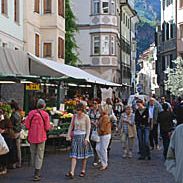 Bolzano
Bolzano
A real place of interesting contrasts – the capital city of South Tyrol is a German speaking area in the northern part of Italy. It is steeped in mountaineering history and is particularly well known for its Museum of Archaeology, home to ‘Ötzi’ the alpine Iceman and as the Italian capital of Christmas, thanks to its nostalgic ‘Christkindlmarkt’ on Walther Square. As well as a good crop of museums, nearby palaces and castles such as Runkelstein and Maretsch surrounded by vineyards, the centre itself is full of atmosphere and great shopping with its painted buildings nestling in small streets and around smart squares.
Castello Pavone
Set upon rocky slopes, this village is dominated by an ancient 9th C. castle, now a hotel, restaurant and conference centre. The Church of San Rocco is a fine example of Piedmontese Baroque.
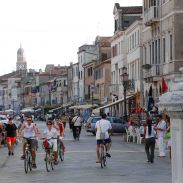 Chioggia
Chioggia
A miniature version of Venice, this coastal fishing town in the Veneto region is located on a small island at the southern entrance to the Lagoon of Venice and is connected to the mainland and Sottomarina by causeways. The Canale Vena is the main canal and there are lots of little narrow streets (calli) and a number of medieval churches to explore.
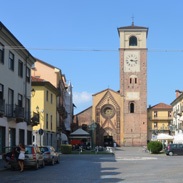 Chiavasso
Chiavasso
This small town is a great place to buy local specialities. whilst strolling under the Medieval porticos or exploring the cathedral. Look out for ‘Nocciolini’, sweets consisting of local hazelnuts.
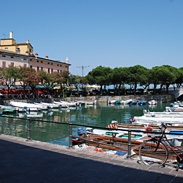 Desenzano del garda
Desenzano del garda
With great views across to the Alps, this resort is the place to be on the southern sideof Lake Garda. It has three large beaches – Desanzanino, Spaggia D’oro and Porto Rivoltella – and numerous cafés and bars providing a lively nightlife. There is a castle, several Villa Romana and a fine cathedral.
Empoli
Situated alongside the River Arno, this town is at the heart of a rich agricultural area. Take a stroll in the Piazza dei Leoni (or Lions’ Square) beside the historic buildings, porticos and Neo-classical fountain. The Collegiata di Sant’ Andrea with its green and white marble frontage dates from the 11th C. Inside is a significant art collection including work by Filippo Lippi and Francesco Botticini. Renowned composer and pianist, Ferruccio Busoni was born in the town in 1866, and his birthplace is now a museum with exhibitions and displays.
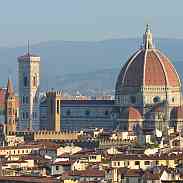 Florence
Florence
Michelangelo, Botticelli and Leonardo da Vinci – the beautiful city of Florence has inspired some of the world’s great artists. Cross the historic Ponte Vecchio, lined with jewellers’ shops and goldsmiths, to a maze of streets and piazzas, palaces, museums, churches and the vast 13th C. Gothic cathedral. A climb up to the terracotta-tiled dome is a must for the spectacular views. Begun in 1560, the Uffizi once housed the prized collections of the Medici, and is now one of the world’s top art museums, including Botticelli’s ‘Primavera’. Remarkable Renaissance sculpture takes centre stage at the fortress-like Bargello, whilst the Galleria dell’Accademia houses Michelangelo’s masterpiece ‘David’. Michelangelo is buried along with many of the other great and good of Florence at the fresco-adorned church of Santa Croce.
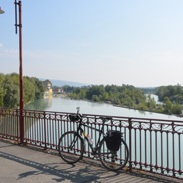 Ivrea
Ivrea
Surrounded by a series of lakes and noted for its annual ‘Battle of the Oranges’ carnival, Ivrea has a cathedral, Roman amphitheatre and 14th C. castle with four large, imposing circular towers.
Lake Candia
Formed by glaciers and fed by underground springs, this small and shallow lake forms the centrepiece of an important wetland nature reserve home to fauna and flora.
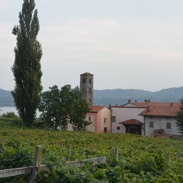 Lake Viverone
Lake Viverone
Covering an area of about 6km, the lake is dotted with small settlements popular for water-based activities. Rich in wildlife and archaeology, there were stilted houses here in the Bronze Age.
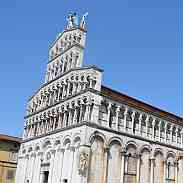 Lucca
Lucca
This colourful red-roofed town is surrounded by its ancient 16th C. walls, today a wonderful tree-lined promenade to cycle, walk or just enjoy the view. The centrepiece of Lucca is the oval-shaped Piazza dell’Anfiteatro, former site of the Roman amphitheatre (scene of gladiator games and spectacles). The Roman grid pattern to the city radiates out from the piazza, with narrow, winding streets lined with fine examples of medieval and Renaissance architecture. Visit the birthplace of Puccini, which brings alive his life and work – a statue of the great opera composer stands just outside in the square. At San Michele church, look up to admire the elaborate 12th C. façade and the top half seems somehow to float in mid-air. A climb to the top of the Guinigi Tower crowned by its shady oak tree is a must.
Marostica
Ancient walled city noted for its cherries and giant chess game played in the Piazza Castello with living characters. Battlements run up the hillside linking the 14th C. Lower and Upper castles.
back to map
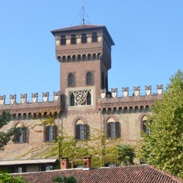 Mazze (Castello Mazze)
Mazze (Castello Mazze)
Historic hilltop town, surrounded by vineyards and woodland, with panoramic views over the surrounding area. The Medieval castle with its turrets and battlements is renowned as a wedding venue.
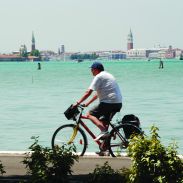 Mestre
Mestre
Located on the mainland, this city is connected to Venice by the Ponte della Libertà, a large rail and road bridge. These day’s it’s a popular place to stay for visiting Venice itself, although it does have some interesting landmarks of its own, including the 12th C. Tore dell’ Orologio, an imposing crenulated watchtower; the 17th C. St. Lawrence cathedral and two ‘Palazzo’.
Montecatini Terme
Set in the heart of Tuscany, this beautiful place packed with Art Nouveau buildings, tree-lined avenues and colourful gardens owes its fame to the abundance of mineral springs found in and around the town. In the 18th C. numerous grand spas were created for the rich and famous to come and enjoy the therapeutic powers of the waters – just as you can today. The 19th C. funicular railway still transports visitors up the hill to the original settlement, now the pretty hilltop village of Montecatini Alto, a great place to browse around the artisan shops and take in the spectacular panoramas of the surrounding countryside.
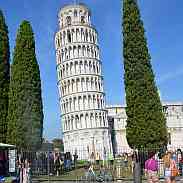 Pisa
Pisa
Lying on the banks of the River Arno and noted for its rich maritime origins, this lively university city is crammed with historical art treasures and monuments. The world famous leaning bell tower (began in 1173) stands proudly overlooking the immaculate green lawns of the Piazza dei Miracoli, home to the splendid marble cathedral, monumental cemetery and circular baptistery, the largest of its kind in Italy. These collectively make up a UNESCO World Heritage Site. An exploration of the narrow streets of Pisa is like stepping back in time – the fine Renaissance-style Piazza dei Cavalieri was once the political and social centre of the city, whilst a walk along the avenues of the river front under ornate lamps and medieval arches leads to the Gothic gem of Santa Maria della Spina.
Pistoria
At the foot of the Pistoiese mountains, this well-preserved medieval city was originally a 6th C. Roman settlement. Attractive Romanesque and Gothic buildings overlook the large Piazza del Duomo including the Cathedral of San Zeno (dating from the 10th C.) and the white and green marble decorated baptistery. The piazza is the scene of the annual ‘Bear Joust’ in July. There are several interesting museums to explore, such as the one dedicated to sculptor Marino Marini who was born in the city in 1901. Look out for the modern ‘Moon in the Well’ artwork in the Piazza Giovanni.
Poggio a Caiano
This hilltop town is dominated by its fine classical Medici villa, built from 1485 by Lorenzo dè Medici on the designs of Giulian da San Gallo. Used by the family dynasty as their summer residence for generations, it was here that the Medici’s newly married brides were received before being welcomed into Florence. It was later a royal residence and the scene of the reputed love affair between Napoleon’s sister and the musician, Nicolo Paganini. Today visitors can stroll in the pleasant gardens and explore the villa with its impressive frescos and still life museum.
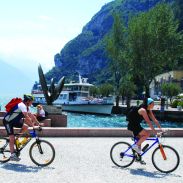 Riva del Garda
Riva del Garda
With Mount Rochetta rising steeply to the west and Monte Baldo to the east, this is one of the most spectacular spots on Lake Garda, also known as Benaco. The Rocca, a medieval fortress on the lake, is home to the town’s museum, but the main concentration here is on watersports and rock climbing, or just sitting in a lakeside café simply drinking in a glass of local wine and the amazing views.
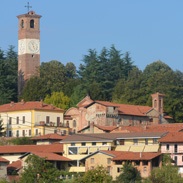 Romano Canavese
Romano Canavese
The town began life as a Roman military camp, and alongside its old gateway’s, churches and noble palaces, the key landmark is the 13th C. red brick tower of the former castle.
Rovigo
Although much developed in the latter part of the 20th C., there are plenty of historic gems in this bustling town with architecture revealing both Venetian and Ferrarese influence. Two towers remain from the 10th C. castle. The cathedral was originally from the same era, but rebuilt in the 15th and 17th C. and amidst the crop of Palazzo and the host of churches La Rotonda deserves perhaps the most attention for its amazing paintings.
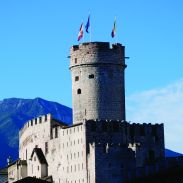 Trento
Trento
One of the richest and most prosperous in Italy, this university city has a vibrant, cosmopolitan feel with an interesting mix of Italian Renaissance and Germanic influences. The Castello del Buonconsiglio is the city’s main icon with its austere walls and round tower, although the frescoes on the Case Rella in the Piazza Duomo alongside the late Baroque fountain of Neptune are incredibly impressive, if more mellow. Many of the late Medieval and Renaissance buildings have been restored to their original pastel colours and wooden balconied facades, contrasting with the solid Romanesque Gothic cathedral.
Treviso
Set within 16th C. walls this charming fortified Italian town has lovely frescoed buildings with balconies and gothic churches. The Duomo was founded in the 1100s but rebuilt several times.
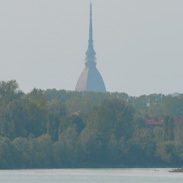 Turin
Turin
Set in Northern Italy, this major business and cultural capital still retains its fine colonnaded boulevards, parks, splendid churches and important artistic and historical treasures, such as the Royal Residences and Egyptian Museum. The magnificent Duomo is home to the famed Holy Shroud, reputedly used to wrap the body of Christ. Piazza Castello, the historic heart of the city, is the place to eat or enjoy a hot chocolate whilst admiring the architecture from Baroque and rococo to neo-classical and Art Nouveau.
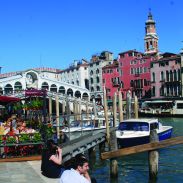 Venice/Venezia
Venice/Venezia
This amazing city and World Heritage Site stretches across 117 small islands in a marshy saltwater lagoon between the Po and Piave estuaries on Northern Italy’s Adriatic coast. Massively wealthy through its rich trading past, it oozes Renaissance achievements. Tiny alleys and the narrowest waterways, such as the Rio della Verona, delight as much as the impressive showpieces of the Grand Canal, Piazza San Marco (St. Mark’s Square) and the Doge’s Palace. Gondala rides, the Campanile, bridges and basilicas and plenty of Palazzo – Venice is a colourful spectacle every day of the year and a great place to explore by boat, by bike or both.
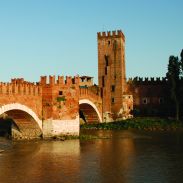 Verona
Verona
Verona is best known for its musical spectacles, which take place in the stunning Roman arena – the third largest in Italy. Other Roman monuments include the theatre and stone wall bridge (Ponte di Pietra). The 12th C. Basilica San Zeno Maggiore is an astounding example of Romanesque architecture, whilst the massive red 14th C. Ponte Scaligero leaves a lasting impression. Renaissance gems are everywhere, overtones of Shakespeare’s inspiration, including Juliet’s balcony perhaps at the Casa di Giulietta. Head up the Lamberti tower for fantastic views and take a short walk to Castel San Pietro to get more amazing panoramas of the outstretched city.
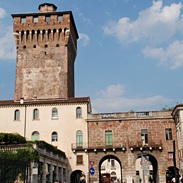 Vicenza
Vicenza
Known as ‘the City of Palladio’, Vicenza is a World Heritage Site with the richest of histories and culture. Piazzas, museums, villas, churches and art galleries abound, and there are some 23 buildings designed by the great master to choose from. Villa Almerico Capra (La Rotonda), the great Basilica Palladiana and Teatro Olimpico with its three-dimensional staging are generally a must, but it’s worth getting out of town to visit the villas in the surrounding Berici countryside too. The earlier Torre Bissara clock tower is one of Vicenza’s tallest buildings and there are other more austere landmarks such as the Porta Castello tower.
Vinci
Set deep amongst vivid green hills of olive groves and vineyards, this small hilltop settlement consists of narrow, meandering lanes and a main square with breath-taking views. In 1452, the great artist, scientist and engineer Leonardo da Vinci was born in a little farmhouse (which can be visited) just outside the town. Celebrate his life, work and amazing inventions amongst the machines and models of the excellent museum housed in the 12th C. castle. Close by, the Renaissance-style church of Santa Croce claims to be the site of Leonardo’s baptism.





